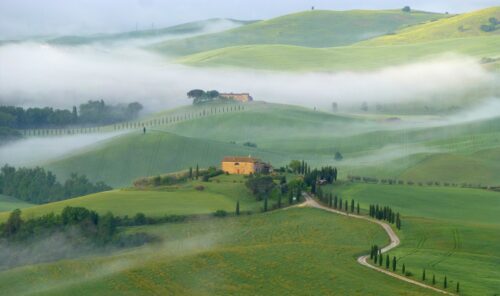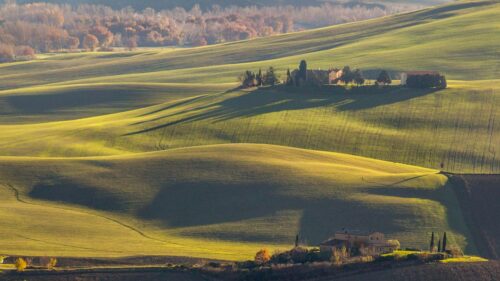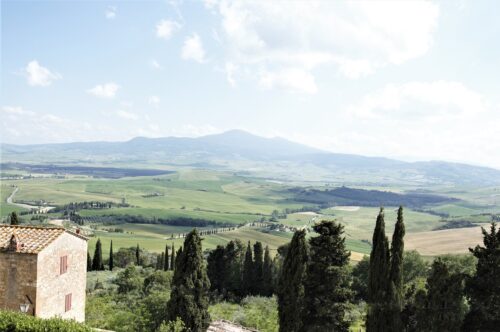Explore the Val d’Orcia
Explore the Val d’Orcia, the UNESCO World Heritage Site in the Province of Sienna, Tuscany. Val d’Orcia is a rural agricultural landscape that retains much of its Renaissance character and aesthetics. The landscape of Val d’Orcia is layered with evidence of human occupation and settlement extending over thousands of years.
The area was important during the Etruscan period and developed during the era of the Roman Empire. In the Middle Ages, agricultural and pastoral production declined and much of the area seems to have been abandoned. A period of economic revival and political stability in the 10th and 11th centuries led to the establishment of monasteries, increased use of the Roman period Via Francigena (an important religious and trade route linking Rome and northern Italy) and the development of villages under a feudal system.


However, it was the dramatic expansion of the city-state of Sienna in the 13th and 14th centuries that led to the creation of Val d’Orcia’s distinctive rural landscape. The landscape became strongly associated with Renaissance (14th-15th centuries) utopian ideals and an ideology expressed, for example, in a circa 1339 painting by Ambrogio Lorenzetti in the Sienna Town Hall.
Wealthy Siennese merchants invested in the development of agriculture, turned the Val d’Orcia landscape into productive farmland, and introduced an innovative land tenure framework (whereby small landowners paid half of their agricultural produce to merchants as rent). Merchants supported the development of settlements, built fortifications, villas and churches and commissioned paintings by artists such as Giovanni di Paolo and Sano di Petri, artists who reinforced the Renaissance utopian ideals on which the landscape was created.


Following the weakening of Siennese power at the end of the 16th century, the Val d’Orcia gradually declined in economic importance. The comparative poverty and marginalization of the area over the following four centuries had the effect of sustaining traditional land-use patterns and structures and thus retaining the Renaissance layout, character and aesthetic of the landscape. In 1999, on the initiative of five municipalities, the area was declared a regional park whose purpose was to protect and manage the cultural and natural values of the area.
The Val d’Orcia distinctive landscape comprises a network of farms, villages and towns reflecting the Renaissance agricultural prosperity, the mercantile wealth of Sienna, the need for defense, and a utopian aesthetic. The working landscape of fields, farms, trees, and woodlands, is interspersed with low, conical hills on the summits of which are situated towns and villages. The major hill towns of the area include Pienza (a separate World Heritage property), Montalcino, San Quirico d’Orcia, Castiglione d’Orcia, Rocca d’Orcia, Monticchello and Radicofani. Distinctive groups and avenues of cypress pine trees mark out the settlements and define routes.
The area comprises small-scale, mixed-produce farms on which grain, vines, olives, fruit, and vegetables are cultivated. The landscape is interspersed with hay meadows and open pasture fields with livestock. The agricultural landscape, which was inspired by and influenced Siennese painters of the Renaissance, has continued to incite – for example, visitors of the European ‘Grand Tour’ and modern-day photographers.
Their images and descriptions have come to exemplify an idealised aesthetic of a Renaissance agricultural landscape. The boundary of the World Heritage property coincides with the boundaries of the modern-day Park of Val d’Orcia (Parco Artistico Naturale e Culturale della Val d’Orcia). Description by UNESCO. org



